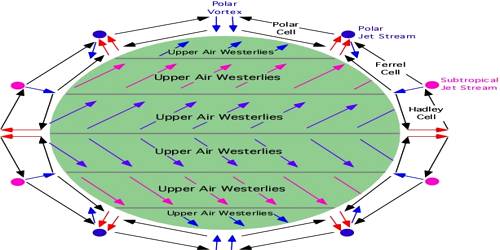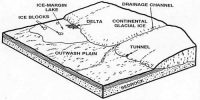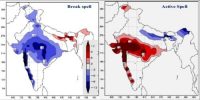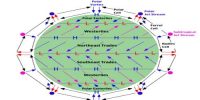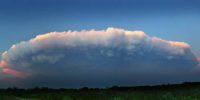Mechanism of Jet Stream and Upper Air Circulation in the Winter Season in Indian Subcontinent:
Jet Stream and Upper Air Circulation: The pattern of air circulation discussed above is witnessed only at the lower level of the atmosphere near the surface of the earth. Jet stream, narrow, swift currents or tubes of air found at heights ranging from 7 to 8 mi (11.3–12.9 km) above the surface of the earth. Jet streams get bifurcated into two branches, after striking with the Tibetan highlands.
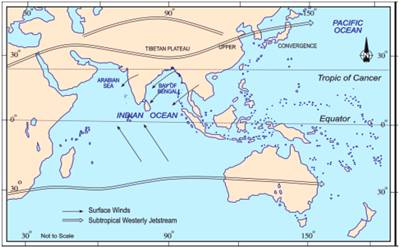
Higher up in the lower troposphere, about three km above the surface of the earth, a different pattern of air circulation is observed. The variations in the atmospheric pressure closer to the surface of the earth have no role to play in the making of upper air circulation. They are caused by great temperature differences between adjacent air masses. There are four major jet streams. Although discontinuous at some points, they circle the globe at middle and polar latitudes, both in each hemisphere. All of Western and Central Asia remains under the influence of westerly winds along the altitude of 9-13 km from west to cast. These winds blow across the Asian continent at latitudes north of the Himalayas roughly parallel to the Tibetan highlands. These are known as jet streams. Tibetan highlands act as a bather in the path of these jet streams. As a result, jet streams get bifurcated. One of its branches blows to the north of the Tibetan highlands, while the southern branch blows in an eastward direction, south of the Himalayas. The northern branch blows to the North of the Tibetan highlands while the Southern branch blows in an Eastward direction, south of the Himalayas. This Southern branch of the jet stream has great influence on the winter weather in India. It has its mean position at 25°N in February at 200-300 mb level. It is believed that this southern branch of the jet stream exercises an important influence on the winter weather in India.
